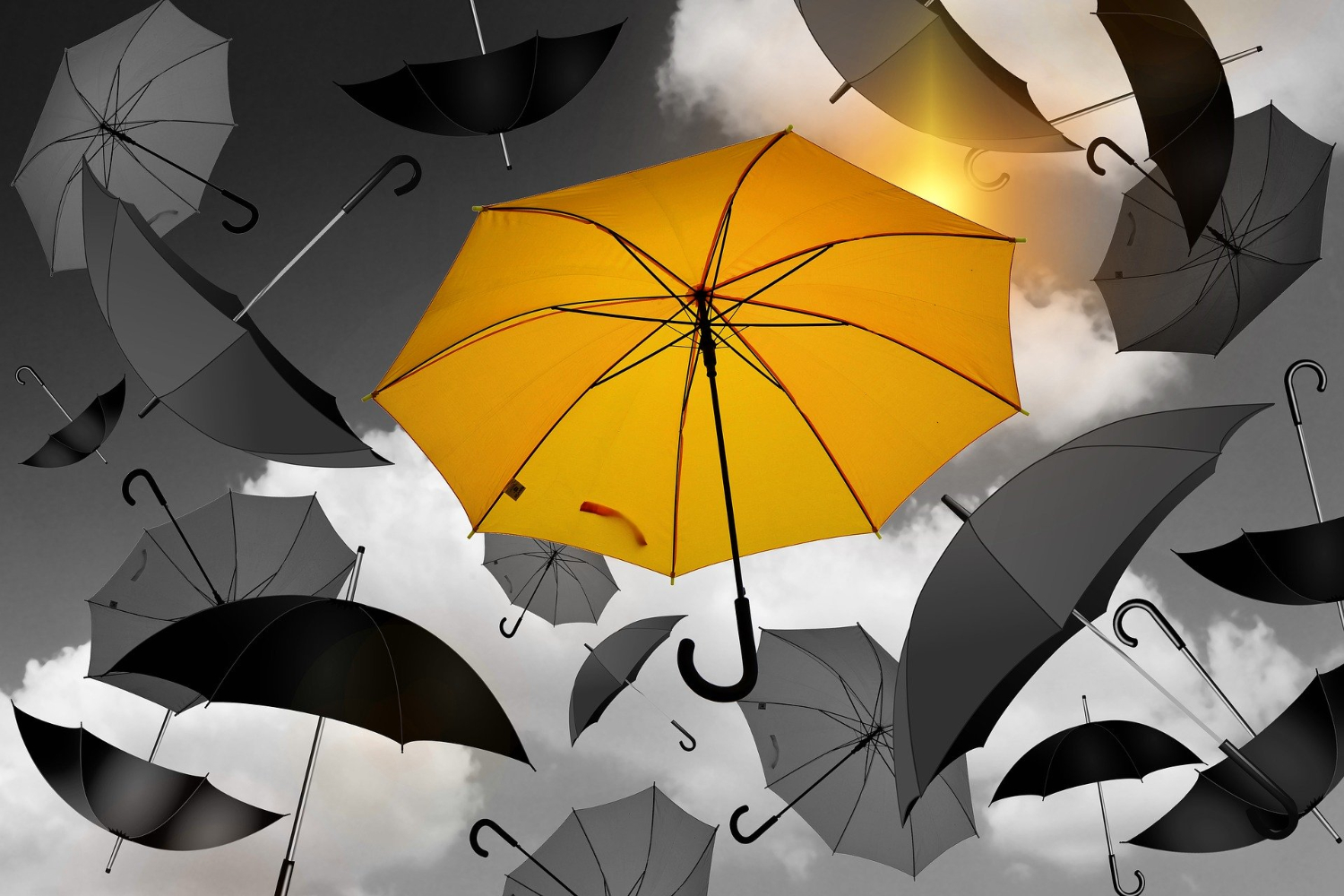This year has been a painful reminder to always plan for the unexpected.
As it relates to personal finances, one could use this lesson to revisit the riskiness of their investments (i.e. stock vs bonds), the amount of cash set aside for emergencies or tweak the monthly spending to remove unnecessary costs. While all of these are worthy examinations, this blog post is going to focus on insurance coverage, and specifically, the need for Umbrella Insurance.
Thinking About Risk
Before getting into the specifics of Umbrella coverage, let’s review a simple framework for thinking about the need for insurance given different types of risks.
Below is a matrix that breaks risk down by frequency (i.e. probability of negative event) and magnitude (i.e. financial loss), and provides the risk management response generally recommended for each:
| Low Frequency | High Frequency | |
| Low Magnitude | Self-Insure | Self-Insure |
| High Magnitude | Transfer Risk | Avoid |
By accepting the risk of low magnitude events like a flat tire or leaky toilet, we can deal with the minor inconvenience of paying for repairs out of pocket. Insuring against these types of small losses doesn’t make sense.
For the really dangerous activities that are catastrophic but easy to avoid, insurance doesn’t fill a role either. Probably not a good idea to go skydiving without a parachute or play with fireworks in the forest.
The final type of risk is the low frequency but catastrophic event that will most likely catch us by surprise. Losing one’s house to a fire, for example, can have severe financial ramifications that could be hard to recover from. It’s exactly this type of risk that is worth insuring.
Umbrella Insurance
Umbrella insurance is intended to protect your savings above and beyond what the liability coverage for your home and auto insurance provide and is sold separately.
Coverage E – Personal Liability of a Homeowners’ Policy covers the insured against lawsuits for injury or medical bills from accidents that occurred on the homeowner’s property. While liability coverage through auto insurance covers against similar claims caused by a car accident.
Coverage amounts for both are generally around $500,000. In the case of a claim, the homeowner or driver would be on the hook for any excess amount of liability beyond the coverage.
Let’s look at an example. Consider the unfortunate summer BBQ where a guest bonks his head diving into the swimming pool leaving him paralyzed. This guest happens to be a doctor, so in addition to medical costs, the host has to pay for loss of income and damages due to emotional distress totaling $2 million dollars. With $500,000 in liability coverage, the homeowner would have to cover the remaining $1.5 million out of pocket putting their life savings and future income in jeopardy.
How Much Coverage do I need?
Umbrella coverage policies range from $1 million to $5 million dollars and are sold in $1 million-dollar increments. The recommended amount is the difference between one’s net worth and their liability coverage.
Using the example above, assume the BBQ host had a net worth of $3 million leaving $2.5 million in net worth subject to claims. In this case, a $3 million umbrella coverage would be appropriate. Why not $2 million? Umbrella coverage is extremely cheap and paying for extra coverage would be worth it. An umbrella policy with $1 million in coverage costs about $300 per year. A small price to pay to safeguard your life savings.
Don’t Be Intimidated
Insurance is notorious for being sold, not bought. Fair or not, the vastness of the insurance market and complexity of products can make assessing your individual needs overwhelming. Don’t let this happen to you. By using the framework provided above, you can simplify your need for insurance and avoid paying extra commissions and fees for unnecessary coverages. If necessary, use insurance to protect against the catastrophic events that are unavoidable, and don’t sweat the small expenses that come with everything else.
If you have questions about insurance or any other planning needs, get in touch.


